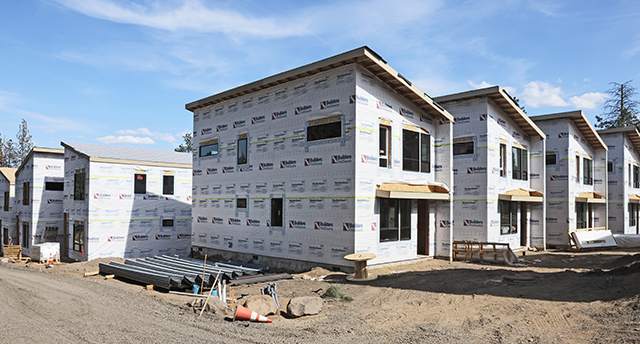Author pushing for sustainable flowers
Published 5:00 am Sunday, April 1, 2012
True love and the convenience-store rose: One is perishable, the other oddly undying — and both, in the end, can feel cheap and disposable.
Yet we want our bouquets to mean something. Consider the credo of California Organic Flowers, a 10-year-old family farm that raises dahlias, sweet peas, lilies, snapdragons and dozens of other blooms.
“It’s this simple,” its owners write on the farm’s website. “Flowers bring the joy and beauty of nature into your home. If there is a sad story of chemical sprays and exploited workers behind your flowers, the joy of the flowers is diminished.”
Gardeners have been holding their noses since the publication five years ago of Amy Stewart’s “Flower Confidential,” in which she wrote that the $40 billion floriculture industry looked a lot like factory farming. Underpaid South American labor, chemical fertilizers, toxic pesticides, exotic biotech and global transport — not a pretty sight.
The quest to put the bloom back on the rose brought a Seattle garden writer, Debra Prinzing, and photographer David Perry to California Organic Flowers and dozens of other farms and florists, mostly across California and the Pacific Northwest. Their book, “The 50 Mile Bouquet,” makes the case that flowers can be sourced as carefully as foods.
“You really do have a choice,” Prinzing, 53, said during a phone call last week from Yakima, Wash., a few minutes before giving a garden talk. “You can ask for locally and seasonally and sustainably grown flowers. They’re out there.”
Q: What’s wrong with the flowers that you pick up next to the candy and celebrity magazines at the supermarket?
A: They’re generally wrapped in cellophane, and they’re kind of this garish palette of bright yellows and bright reds and pinks, with maybe a purple thrown in. They don’t wow me. They don’t really have soul. Somebody who’s used to appreciating flowers in the garden probably wouldn’t be drawn to those.
Q: How can you tell if the flowers at your florist are local and sustainably grown?
A: You cannot tell. There is no requirement for country-of-origin labeling in cut flowers. But they do look different to me.
It’s almost an intangible. It’s perhaps softer or more irregularly shaped. The stems aren’t going to be ramrod straight. The foliage might have some imperfections to it. You’re certainly going to notice if it’s a scented flower. A lot of flower farmers are trying to concentrate on heirloom varieties that do have inherent fragrance — that perfume you associate with a cutting garden or an heirloom garden or Grandma’s garden.
Q: What are some flowers that have been particularly successful for domestic growers?
A: One of the favorites is amaranths, which are really popular with floral designers. Celosia — cockscomb — is another one that people just go nuts over. All the unusual zinnia varieties. Those are annuals. They probably wouldn’t be grown in South America or shipped.
Dahlias are the No. 1 in-demand bridal flower right now. I’m saying this anecdotally. It just seems like dahlias are huge, and they don’t ship well.
Q: How would you pitch local flowers to the discriminating bridal party?
A: It’s actually not that hard, because the green wedding market is so enormous right now. It’s wrapped up into that whole idea of wanting to have local food and maybe ride bicycles to the wedding and have local wine. Brides who are into that sort of thing want to have flowers that reflect the time and place of the wedding. I’m hearing from a lot of flower farmers about bridal parties wanting to harvest their flowers straight from the farm and then create their own bouquets and arrangements.
A lot of the growers in the book are on the West Coast, where the growing season is, like, 400 days a year. What kind of local, seasonal flowers am I going to find in New York in January? Or April, for that matter?
There are flower farmers in every state. One of the best resources is the Association of Specialty Cut Flower Growers (ascfg.org), which has a very unsexy name. But if you go on their website, under “buy local flowers,” you can search by state and find someone in every state in the country. What the designers in the New York market are doing, the ones who are really intentional, is working with a lot of flowering branches in the winter, a lot of woody material. If you go down to the flower district right now, you’ll find flowering cherry and flowering quince and maybe early magnolia branches. It’s a narrower palette.
Q: What makes a stunning natural arrangement?
A: There are three elements. There’s sort of the diva flower that has that eye-catching, dramatic bloom. That would be a rose or peony or a dahlia, something that’s almost inherently symmetrical or dome-shaped. And then I like to have something emerging that’s taller. Often it’s a branch or an ornamental grass — something that is kind of my exclamation point. And then, to me, no arrangement is complete without some soft element draping over the edge. Sort of dripping like a chandelier. That’s where I love the amaranth or the cerinthe or even the foliage that comes draping over the edge, like lamb’s ear, maybe.
Q: True or false: A rose is a rose is a rose.
A: False. I’m not enchanted by that softball-shaped Ecuadorean rose that’s on a tall stem that looks like it’s frozen in time. I love little tiny hybrid teas. They’re not as sexy and big. They’re more feminine — more what you’d get off a rose shrub versus one of those sort of factory roses. I’ve learned to prefer the idea that smaller is better. I know that’s not the American way!







